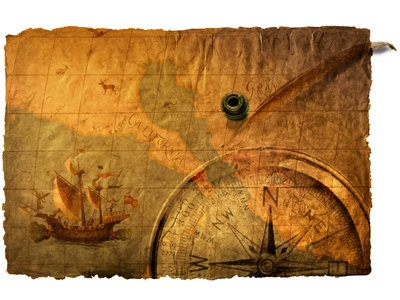
Ask the AI Tutor
Need help with The Merchant of Venice - Understanding the Text? Ask our AI Tutor!
AI Tutor - Lucy
Connecting with Tutor...
Please wait while we establish connection

What happens to Antonio's ships?
The Merchant of Venice - Understanding the Text
Use this quiz to check how well you understand The Merchant of Venice, from key plot points and relationships to the decisions characters make in Venice and Belmont.
1 .
What is Shylock able to do that Antonio is not?
Leave Venice
Lend money
Trade goods
Charge interest on loans
Skylock is allowed to practice usury, which is the charging of interest on loans of money
2 .
Regarding the answer to question one, why is this practice forbidden to Antonio?
Because he is a merchant
Because he is a Christian
Because he lives outside Venice
Because he is a friend of the Duke
Until the sixteenth century in England, as in much of Europe, Christians were forbidden by the church to practice usury. Jewish people often faced severe restrictions on economic activity but were not bound by the laws regarding usury
3 .
Why does Bassanio wish to borrow money from Antonio?
He needs the money to pay off moneylenders
Portia's father demands payment for his daughter
He would like to become a merchant
He needs money to impress Portia
He must present himself as an appropriate suitor to the wealthy Portia. Ironically his wealth is not truly his own, but borrowed at great danger to his friend
4 .
What can be found in the leaden casket?
Portia's portrait and a scroll
A portrait of a fool and a document
A skull and a scroll
None of the above
Bassanio distrusts the impressive outer appearance of both the gold and silver caskets, correctly choosing the foreboding leaden casket instead
5 .
In order to make a point, Shylock demands a pound of flesh as a forfeit if Antonio is unable to pay back his debt. How does Shylock refer to this agreement?
A fair bond
A favourable bond
A merry sport
A bond of friendship
Claiming that the forfeit is a sort of game, Shylock calms Bassanio's fears by asking what use a pound of a man's flesh would be to him if Antonio were to fail to repay the debt
6 .
What happens to Antonio's ships?
They were reported lost
They were wrecked
They returned to harbour
All of the above
Some ships are wrecked and others are reported missing. Antonio believes all of his ships to have been lost, but in the final scene, Portia surprises him with news that three of his ships have returned to harbour
7 .
Which of the following does NOT prompt Shylock to seek revenge on Antonio?
Antonio and Bassanio refuse to allow Shylock to dine with them
Antonio loans money widely without charging interest
Antonio's friends are involved in the elopement of his daughter
Antonio regularly mocks and vilifies Shylock
Shylock turns down, then accepts invitations to dine with Christians, but is distrustful and ill at ease at their invitation. While he is away, Jessica elopes with Lorenzo
8 .
How does Portia rescue Antonio?
She persuades Shylock to be merciful
She pays Shylock twice as much as Antonio owes him
She entraps Shylock in the letter of the law
Antonio is saved by the learned doctor, Balthasar, not by Portia
Shylock insists on obedience to the letter of the law before Portia reminds him that his bond is logistically impossible to carry out since he must take his pound of flesh without spilling a drop of blood
9 .
Which of the following is NOT revoked when Shylock is sentenced?
He must become a Christian
Half of his estate must be given to Antonio
Half of his estate must be given to the Duke
He must lose his life
The Duke pardons his life, which was forfeit, and Antonio pardons his share of half Shylock's estate. Antonio does this on the condition that Shylock will become a Christian (which was not part of the original sentence). Their "mercy" leaves Shylock humiliated
10 .
What does Bassanio do with Portia's ring?
He gives the ring to Antonio at Portia's request
He gives the ring to "Balthasar" at the urging of Antonio
He gives the ring to "Balthasar" immediately
He gives the ring to the Duke at Portia's request
"Balthasar" demands the ring and Antonio persuades Bassanio to ignore his wife's commandment
**Unlimited Quizzes Await You! 🚀**
Hey there, quiz champ! 🌟 You've already tackled today's free questions.
Ready for more?
Ready for more?
🔓 Unlock UNLIMITED Quizzes and challenge yourself every day. But that's
not all...
not all...
🔥 As a Subscriber you can join our thrilling "Daily Streak" against other
quizzers. Try to win a coveted spot on our Hall of Fame Page.
quizzers. Try to win a coveted spot on our Hall of Fame Page.
Don't miss out! Join us now and keep the fun rolling. 🎉
**Unlimited Quizzes Await You! 🚀**
Hey there, quiz champ! 🌟 You've already tackled today's free questions. Ready for more?
🔓 Unlock UNLIMITED Quizzes and challenge yourself every day. But that's not all...
🔥 As a Subscriber you can join our thrilling "Daily Streak" against other quizzers. Try to win a coveted spot on our Hall of Fame Page.
Don't miss out! Join us now and keep the fun rolling. 🎉






